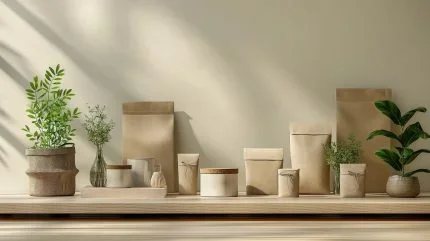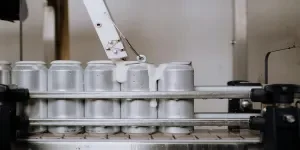Discover how leading companies are adopting these principles to meet consumer demand and reduce their environmental impact.

In an era marked by environmental concerns and a growing focus on sustainability, the minimalism movement in packaging design has gained significant momentum.
This trend emphasises reducing waste, using eco-friendly materials, and creating efficient, functional designs.
Leading companies are adopting these principles to meet consumer demand for sustainable products and reduce their environmental footprint.
Reducing waste through simplified designs
One of the primary goals of minimalist packaging is to minimise waste. By stripping down packaging to its essential components, companies can significantly reduce the amount of material used.
This not only lowers production costs but also lessens the environmental impact. For example, several companies have begun to eliminate unnecessary layers of plastic and other non-biodegradable materials, opting instead for streamlined designs that use less material without compromising on protection or functionality.
Moreover, the shift towards minimalism often involves rethinking traditional packaging methods. Companies are exploring innovative ways to package products, such as using flexible pouches instead of rigid containers or designing packaging that doubles as a reusable storage solution.
These strategies not only cut down on waste but also offer added value to consumers, enhancing the overall user experience.
Embracing eco-friendly materials
The choice of materials plays a crucial role in the minimalist packaging movement. Many companies are turning to sustainable materials, such as recycled paper, biodegradable plastics, and plant-based inks.
These materials not only reduce the environmental impact of packaging but also align with the values of eco-conscious consumers.
Biodegradable plastics, for instance, break down more easily in the environment compared to traditional plastics, which can take hundreds of years to decompose. Recycled paper is another popular choice, as it reduces the need for virgin materials and supports the recycling industry.
Plant-based inks are also free from harmful chemicals, making them a safer alternative for both the environment and human health.
Innovations in material science are also contributing to the growth of minimalist packaging. For example, researchers are developing new types of packaging that are not only sustainable but also enhance the shelf life of products.
Edible packaging, made from materials like seaweed and rice, is an emerging trend that could revolutionise the industry by eliminating waste altogether.
Efficiency in packaging design
Efficiency is at the heart of minimalist packaging design. This approach focuses on creating packaging that is not only aesthetically pleasing but also functional and cost-effective.
By reducing the complexity of packaging, companies can streamline their production processes, leading to faster turnaround times and lower costs.
One example of efficient packaging design is the use of flat-pack formats. These designs allow products to be shipped and stored more compactly, reducing transportation costs and the carbon footprint associated with shipping.
Flat-pack packaging is particularly popular in the furniture industry, where it has revolutionised the way products are delivered and assembled by consumers.
Another aspect of efficiency is the incorporation of modular designs. These designs use standardised components that can be easily assembled or disassembled, making it easier to customise packaging for different products.
Modular packaging not only enhances efficiency but also reduces the need for multiple packaging solutions, further contributing to sustainability efforts.
The future of minimalist packaging
The minimalism movement in packaging design is more than a trend; it represents a fundamental shift in how companies approach packaging. As environmental concerns continue to rise, the demand for sustainable and efficient packaging solutions is likely to grow.
Companies that embrace minimalism in their packaging designs are not only meeting current consumer demands but also positioning themselves for future success in an increasingly eco-conscious market.
Education and awareness play a vital role in advancing minimalist packaging. By educating consumers about the benefits of minimalist and sustainable packaging, companies can foster greater acceptance and support for these initiatives.
Transparency in sourcing materials and production processes can also build consumer trust and loyalty.
Ultimately, the minimalism movement in packaging design is driving significant changes in the industry. By reducing waste, embracing eco-friendly materials, and focusing on efficiency, companies are creating packaging solutions that are both sustainable and functional.
As this movement continues to evolve, it holds the promise of a more sustainable future for packaging design and the environment.
Source from Packaging Gateway
Disclaimer: The information set forth above is provided by packaging-gateway.com independently of Alibaba.com. Alibaba.com makes no representation and warranties as to the quality and reliability of the seller and products. Alibaba.com expressly disclaims any liability for breaches pertaining to the copyright of content.




